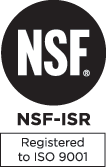How to Identify Different Computer Circuit Board Components
Whether you’re an electronics hobbyist, researching custom circuit board options, or looking to stock up your at-home electronics lab, at some point you’ll need to identify common circuit board components. If you want to go ahead and get started, continue reading to learn how to identify different computer circuit board components.
What You Need to Know
There are three common conveniences when trying to identify the different components on a circuit board. The first is that they will commonly have their specs marked on them. Obviously, this isn’t always the case, but it’s standard practice and very helpful for identifying what you’re looking at. The other is that many components have a letter or pair of letters that are used to help distinguish them for you. For one example, integrated circuits often have a “U” or “IC” marked on them, which is helpful for a quick reference.
Thirdly, may components will be color coded. This is perhaps less frequently used, but it’s still something to keep in mind. For printed circuit board assembly in Illinois, it’s a good idea to be familiar with the various components that make up a circuit board.
· Batteries tend to be fairly easy to find. They may be coin shaped, barrel style or rectangular, but they often have their specs already listed on them. The battery’s connector should also help you in locating it.
· Fuses are often made of a clear or semi-transparent material and will frequently have their voltage and amperage ratings marked on them. This makes them pretty easy to find.
· As mentioned previously, integrated circuits are usually marked with a “U” or an “IC” for ease of identification. They come in many different shapes and sizes, so they can otherwise sometimes be difficult to distinguish. The datasheet for your device should be helpful it locating the integrated circuits.
· Crystals and oscillators can come in a variety of materials, shapes, colors, and sizes, but they are usually marked with an “X” or a “Y” on the circuit board. They will also typically have their operating frequency printed on them.
· Inductors are sometimes known as coils, and while their appearance can make them stand out, they aren’t always easy to find. They might be conveniently color coded, so you can reference a resource list to help identify them. They’re often marked with an “L” on the circuit board, and you can use a meter to test them if you have one available.
· Capacitors are remarkably common in circuit boards. Some will have their values printed on them, while others will be color coded for quick reference. Capacitors are often marked with a “C” on circuit boards.
· Resistors are possibly the single most common component in a circuit board. Usually, they’re color coded, but occasionally they’ll have their value in Ohms and tolerance printed on them instead. You can also use a multimeter to check resistance, but this should only be done after the resistor has already been removed from the board; otherwise, you can get inaccurate readings. There are many helpful online tools available if you want to check values. Resistors are often marked with an “R” to help identify them on the circuit board.
· A potentiometer is a variable resistor and will often have a “VR” to indicate it on a circuit board. Their value is typically marked on them, and they may have a three-digit code or letter code.


 (847) 520-5770
(847) 520-5770

